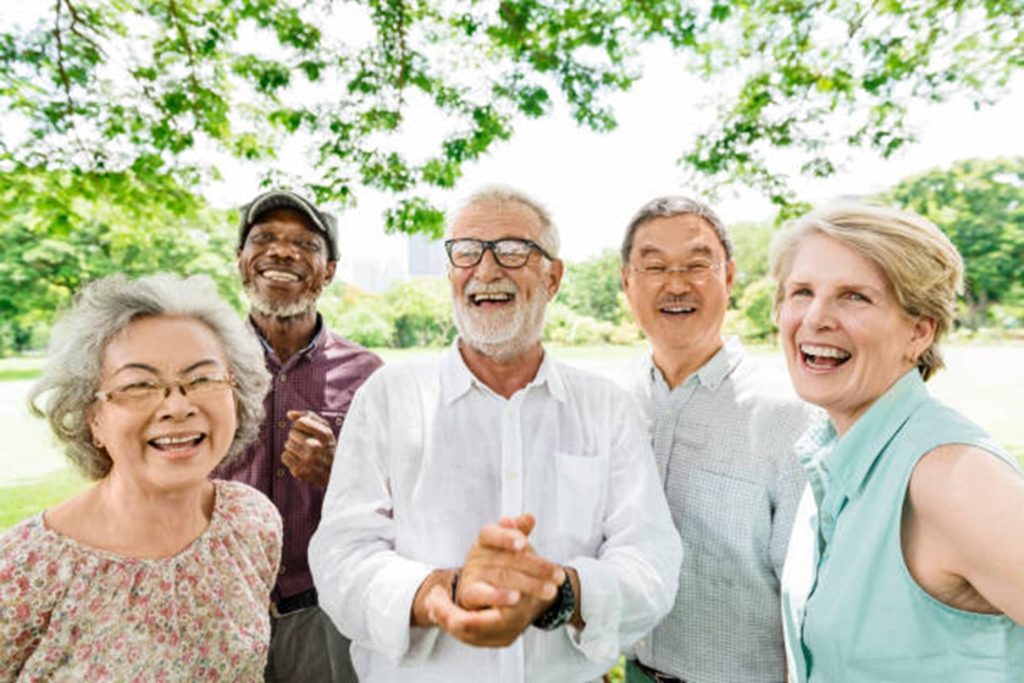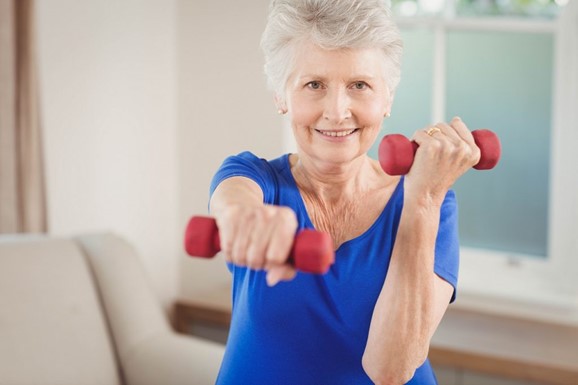Get in Shape with Exercise and without the Pain!
Baby boomers are living longer. Why? Because Baby boomers are acquiring knowledge, asking questions, eating better, attending physical therapy and finally, are exercising in some form or another. However, in my 21-year career as both a physical therapist and personal trainer, most seniors don’t know where to begin when it comes to starting an exercise program.

So where do you begin? First, a reasonable starting goal is vital. Exercise is an effective way to get in shape, deal with an injury, lower blood pressure and improve heart vitality! Take advantage of free resources like this webinar to learn about additional strategies to stay active and pain free. Like any new resolution, though, there is a tendency to aim too high and quit too soon. Exercise comes in many shapes and forms. With a good pair of sneakers, you can’t go wrong starting with a walking program:
15 Minutes
1 to 3 times per week
Walk at your pace
Second, make the goal fit your needs. Research has shown that women over the age of 50 are 4 times more likely to have bone loss (osteopenia) than men. Even more alarming, physically inactive people can lose as much as 3% to 5% of their muscle mass each decade after age 30.
Engaging in a strength training program will combat bone loss and strengthen your spine, weight bearing joints, and muscles. Start with basic movements such as sit to stand, or body weight squats. Progress to light weights for your upper body. Begin with side raises for your shoulder, alternating push vs. pull movements. A push movement would be an exercise such as a shoulder press. Performing bicep curls would be considered a pull movement. In order to have muscle balance within the body, it is important to strengthen the muscles of the back of the body equally, if not more than the front of the body. The reason is that the muscles of the front of the body (i.e. the chest, arms, front shoulders) tighten and pull the shoulder forward, creating postural imbalance. The muscles of the back of the body (i.e. rotator cuff, shoulders, back, legs) are weaker biomechanically.

Osteoarthritis (O.A.)
Osteoarthritis (O.A.), or inflammation of the bones, commonly affects the spine, hips, knees, and weight bearing joints. Engaging in movement will improve mobility in connective tissue and muscles, decreasing the load to the joint. Stretching tight quadriceps, hip flexors, low back and hamstrings will alleviate pressure off the lumbopelvic junction. Try either chair yoga or floor yoga classes. This will improve mobility and decrease stress as well as improve core strength.
Weight training exercises, such as shoulder side raises, in place squats, and standing mid row, will strengthen the core. Finally, swimming or doing vertical aqua therapy exercises decompresses the spine, feels good, and strengthens the core as well as the connective tissue and joints.
The free webinar on 'How to Stay Active When You're Older' starts in:
An alternative option for pain care management and sport injuries
If you develop pain in your back, hips, thighs, or knee, ice the area and rest. Another option is VibraCool®. Vibration in a specific frequency, also called mechanical stimulation (M-Stim®), separates muscle fibers, and improves blood flow. A timed thin intense ice pack then reduces the inflammation. Most therapists recommend using the M-Stim alone for 5 minutes before a workout to help warm up the tight muscle, then using the ice and vibration after a workout to help reduce inflammation and keep the area loose. Learn more about M-Stim here.
VibraCool works best for joint pain, as the joint position nerve is responsible for 90% of M-Stim pain-blocking. Classically used for knee pain, the technology is also appropriate for elbow pain (epicondylitis), muscle tension, strains, and muscular injuries. VibraCool features comfortable, adjustable compression, which is easy to use. The Oscillice® technology blocks the pain on contact, reduces stiffness and speeds healing. Providing you no muss or fuss, VibraCool can help you get you back to the things you love!
By Chris Gellert, PT, MMusc & Sportsphysio, MPT, CSCS, C-IASTM, NASM-CPT
